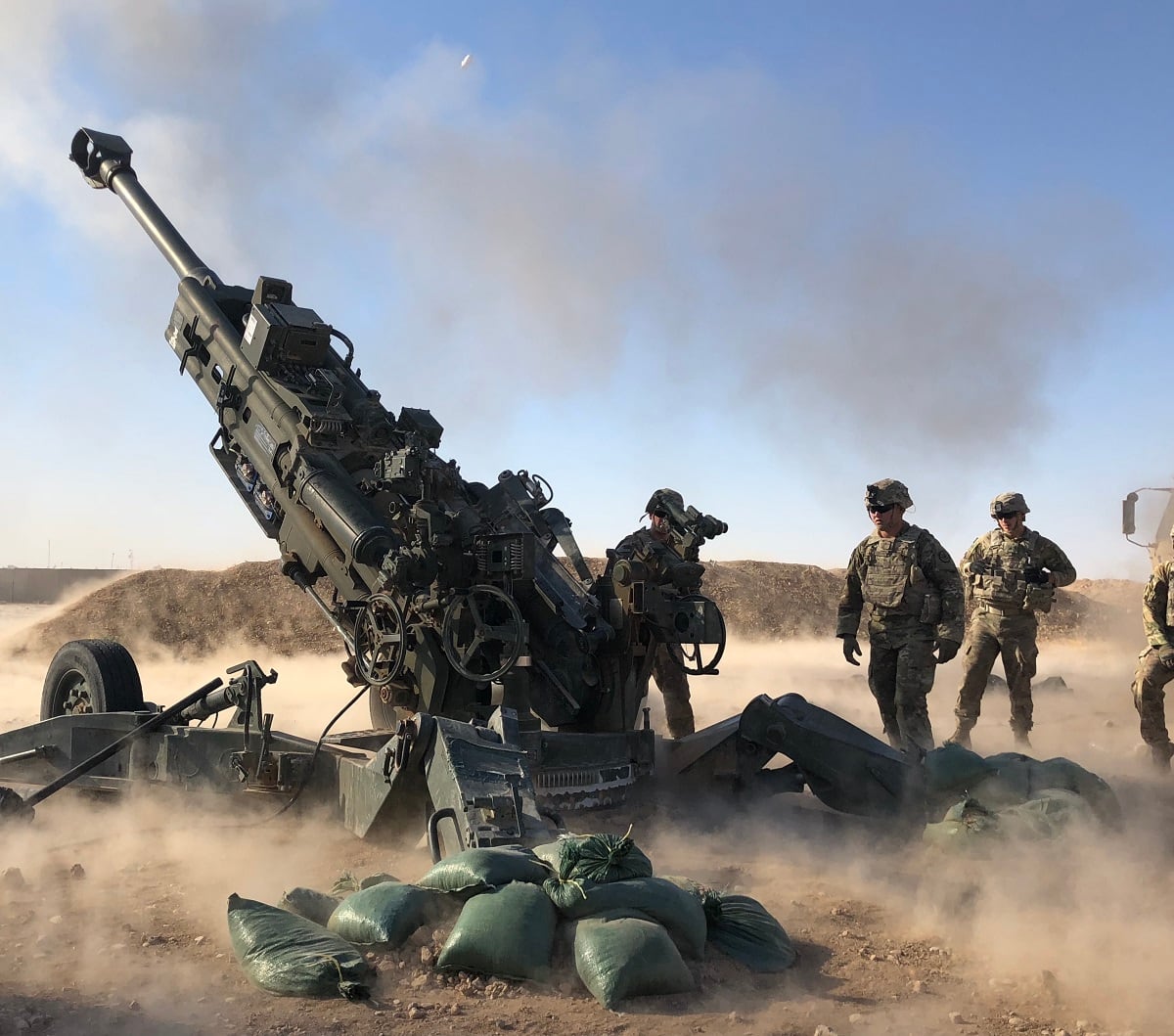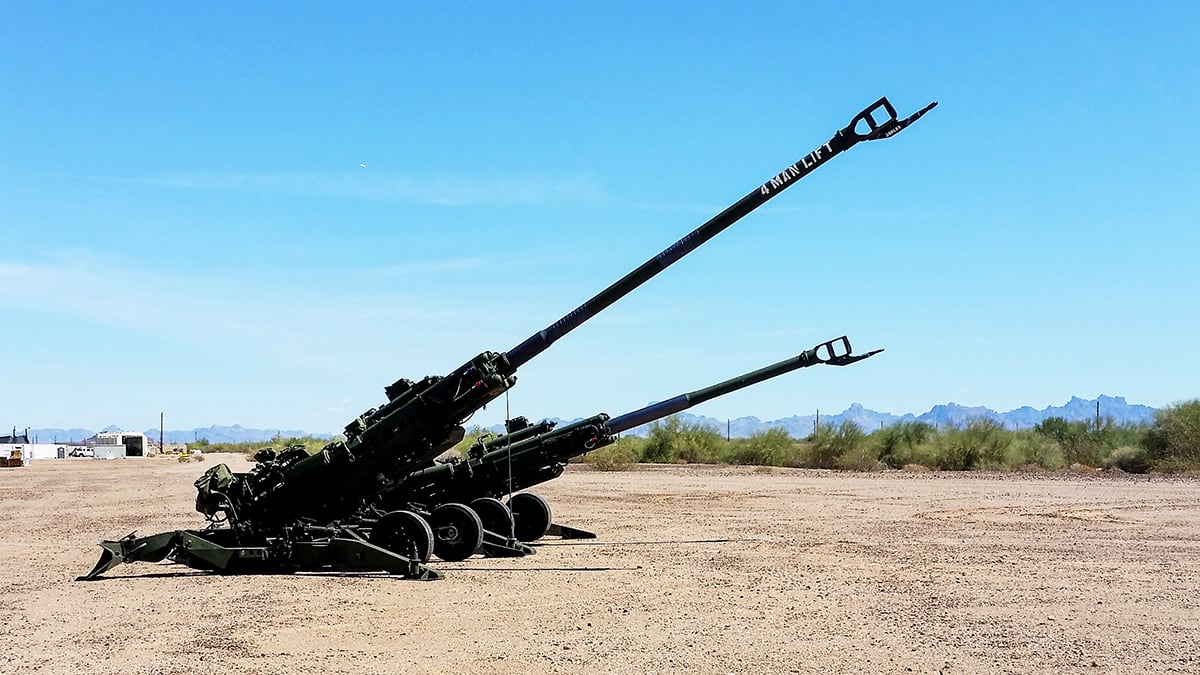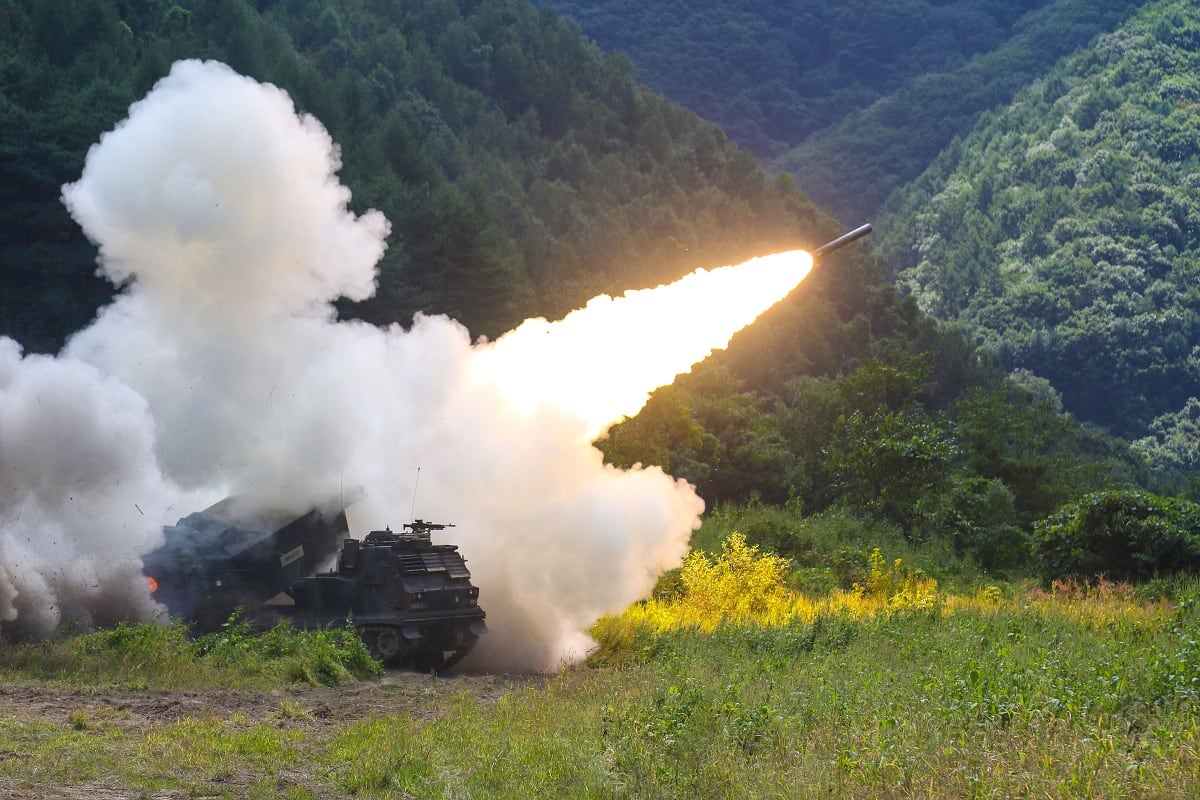YUMA, Ariz. — The Army is testing new ways to enable its artillery to shoot many miles farther as the U.S. military prepares for the possibility of large-scale conflict after years of focusing on counter-insurgency warfare.
The Yuma Sun reports the Army’s Extended Range Cannon Artillery program is testing a modified M109 Paladin self-propelled howitzer with a cannon tube nearly 30 feet (9 meters) long, a new breech and a chamber redesigned to accommodate more propellant.
Col. John Rafferty said the testing at the Army's Yuma Proving Ground in southwestern Arizona is aimed at being able to defeat potential adversaries who already have developed artillery that out-ranges their U.S. counterparts.
RELATED

The Army's 155mm howitzers have a standard maximum range of about 20 miles (32 kilometers), which can be doubled to 40 miles (64 kilometers) by using advanced rocket-assisted ammunition. However, the current program aims to extend the range to more than 60 miles (97 kilometers).
“Being able to outshoot our opponents is a critical offensive capability,” said Rafferty, director of the Long-Range Precession Fires Cross Functional team. “In doing so, we create the conditions by which we are fighting, rather than them dictating the conditions under which we have to fight.”

Along with testing a lengthened barrel, the Army is looking at possibly extending the howitzer’s shooting distance to up to 100 kilometers (62 miles) by developing a projectile that would basically function like a rocket. It is also being adapted to use a kit that turns a conventional artillery round into a semi-guided one.
The changes are intended to produce increased accuracy as well as greater range, Rafferty said. "It is just not shooting farther. It is shooting farther with a degree of precision to be lethal. We need to kill what we are shooting at."
RELATED

It's essential to consider the barrel, the projectile and propellant together, Rafferty said. "Each time we shoot we are testing something else. We are getting more information, more data and refining the projectile and propellant, cannon and breach. There is still a lot we don't know."
While senior Army weapons developers welcome the possibility of longer-range accurate artillery fire, they also recognize the need to pursue target-seeking artillery in the near future, Rafferty said.





